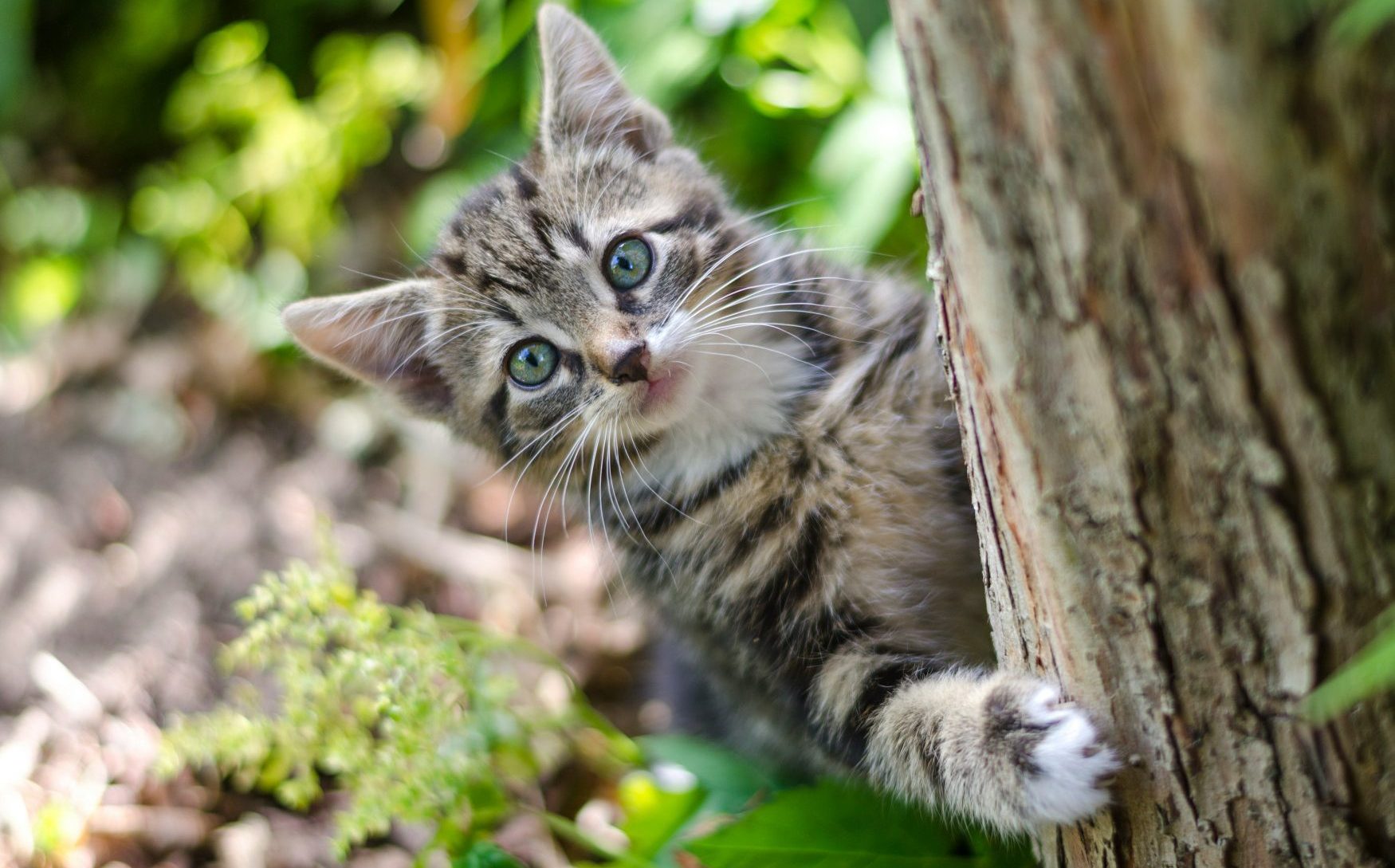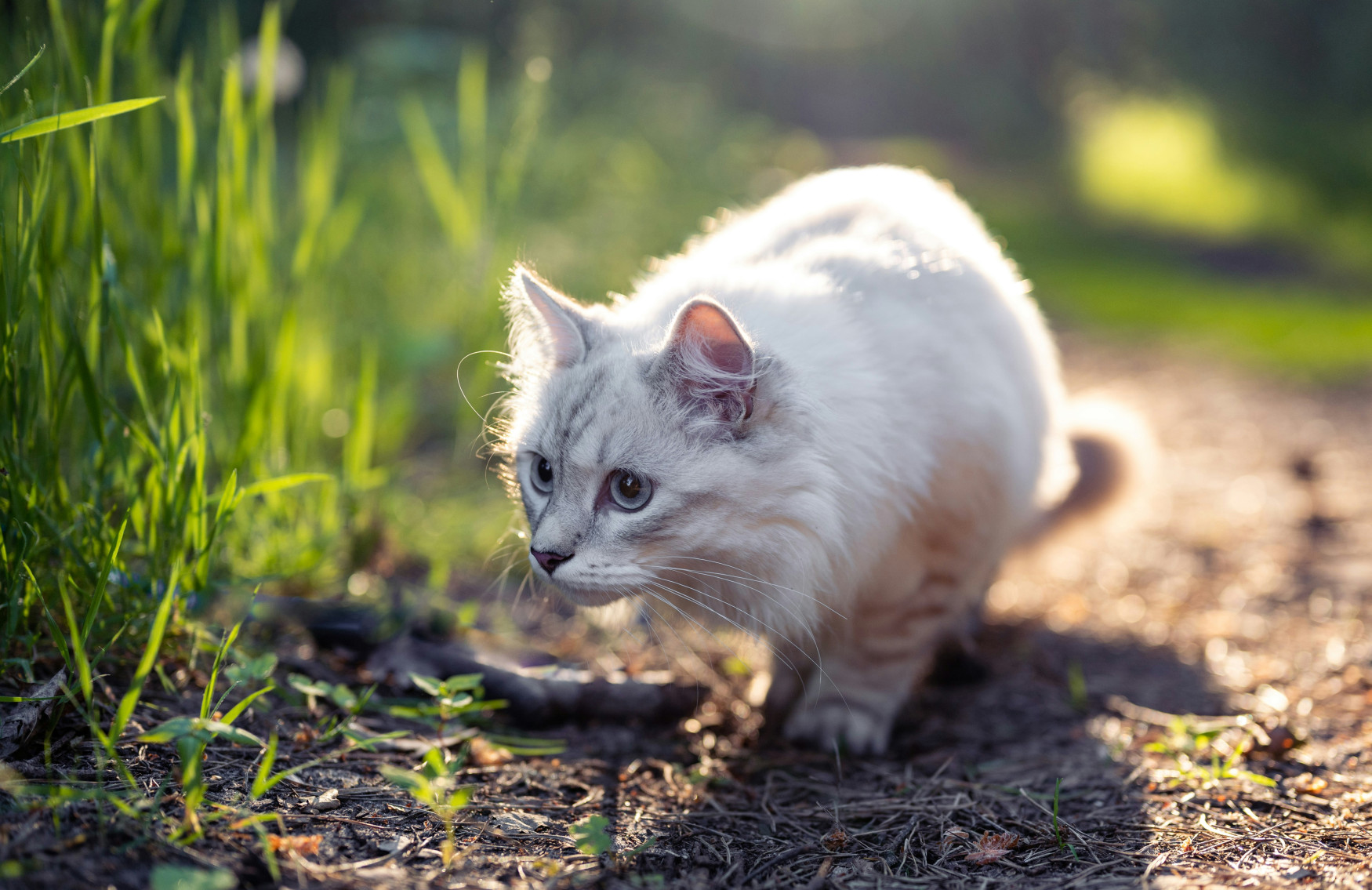
Protecting wildlife, one catio at a time – TRU Newsroom
Carpooling, recycling, composting — many environmental efforts are straightforward, obvious and relatively easy to practice. Some environmental issues, however, are more contentious, with unclear solutions.
Thompson Rivers University (TRU) alum Denise King has shed light on one such issue: cats. Specifically, outdoor cats.
Denise King and her fine furred friends out for a walk on leashes to prevent them from going after wildlife.
“Outdoor cats, with their natural predatory instincts, pose a significant risk to small wildlife, especially birds,” says King, who now works as a grants and awards specialist with the City of Kamloops. “Cat owners allow their cats to go outdoors unsupervised and as a result, cats impact bird populations and damage property.”
King began researching the environmental impacts of outdoor cats in 2017 as part of her thesis for TRU’s Master of Science in Environmental Science program under the supervision of Dr. Peter Tsigaris. The research has since evolved and was recently published in the open access journal Pet Behaviour Science under the title, Risk Perceptions about Outdoor Pet Cats in a Small City in the Interior of British Columbia.
“Our research aims to inform provincial feline bylaws and promote responsible pet ownership through supervised outdoor time and cat enclosures,” Tsigaris says.
The research – co-authored by King and Tsigaris – explores risk perceptions of the impact outdoor pet cats have on local wildlife in addition to the risks these pets themselves face.
Through an online survey conducted in Kamloops – a city of approximately 100,000 in the BC Interior – King and Tsigaris were able to analyze the responses of 584 people, including 155 outdoor cat owners, 221 indoor cat owners and 208 non-cat owners. The results indicated a disparity of the perceived ecological impacts of outdoor cats.
“Outdoor cat owners often view their cats as natural controllers of the rodent population,” King and Tsigaris write. “Indoor cat owners and non-cat owners express concern over the impact on birds and the potential for property damage.”
Their analysis also reveals that women and individuals with higher education levels tend to perceive greater dangers to outdoor cats from predators.
“This insight can guide targeted educational initiatives and communication strategies, ensuring that they resonate with different segments of the community,” Tsigaris says.
The purr-pose

Cat stalking birds, 1916, The domestic cat, known for its predatory nature and ability to hunt birds and mice, is a threat to wildlife. However, there are ways to harness and manage its behavior. Author Forbush, Edward Howe, (1858-1929)
King’s original research was spurred by her love of cats and her desire to protect them.
“It is important to understand that the well-being of outdoor cats themselves, is at risk,” King says. “The risks outdoor cats face is significant, including threats from predators like coyotes, wildcats and large birds, disease and anthropogenic dangers such as vehicular accidents and getting lost.”
“Outdoor cats are a welfare concern to themselves.”
However, the risks outdoor cats face themselves and the risks they pose to other wildlife is a matter of perception according to her research.
A purr-fect solution?
Ideally, the best solution to mitigate the environmental impact of outdoor cats is to find a balance that respects the welfare of both wildlife and pet cats, according to King and Tsigaris.
“Our research highlights the impact of outdoor cats on wildlife and the risks they face,” Tsigaris says. “I hope pet owners will take steps like using cat enclosures to protect both cats and wildlife, promoting a harmonious coexistence and fostering ecological stewardship.”
King suggests that these risks can be mitigated by specific local policies, practices and educational materials. However, she explains, that it is a contentious issue requiring careful planning and collaboration with animal welfare organizations.
“I have honestly found that engaging in discussions with cat owners is the best way to share information about risk mitigation for outdoor pet cats,” King says, often suggesting options such as outdoor catios – outdoor cat enclosures – and leash training.
Further research

King and Tsigaris intend to continue their collaboration and submit additional research from her thesis to select academic journals.
“Peter has been a constant cheerleader for my research and its publication,” King says of her mentor, who recently received TRU’s Graduate Research Mentor Award.
Tsigaris specifically references the concept of the value of a statistical life (VSL).
The VSL of a cat is a topic in King’s thesis focusing on the idea that many people will pay a certain amount of money to reduce the risk of a cat dying prematurely while outdoors. While VSL research has been conducted for humans, only one recent study assesses the VSL of an animal, in that case a dog.“What surprised us most was that indoor cat owners were also willing to pay to reduce the risks of a cat dying prematurely,” Tsigaris says. “The VSL was found to be an average of around $8,000 per cat’s life saved.”
“Letting cats outdoors does not mean that the owners don’t value their cats,” King says. “Perhaps there is a way to convince municipalities to implement control measures that reduce the risks as long as the benefits of saving cats from dying prematurely exceed the cost of the controls.
Understanding that free-roaming cats are not at the forefront of the minds of all residents in Kamloops, King plans to promote awareness through a more entertaining approach.
“Once I retire, I plan to write fiction as an avenue to convey the risks cats incur and impose on our environment,” the self-declared, modern-day cat lady says. “I have a lot of ideas that include going to the library or schools dressed up as a cat and reading my stories, which will not only help them understand the cat’s view, but also help them to see the big picture.
“How fun will that be!”
